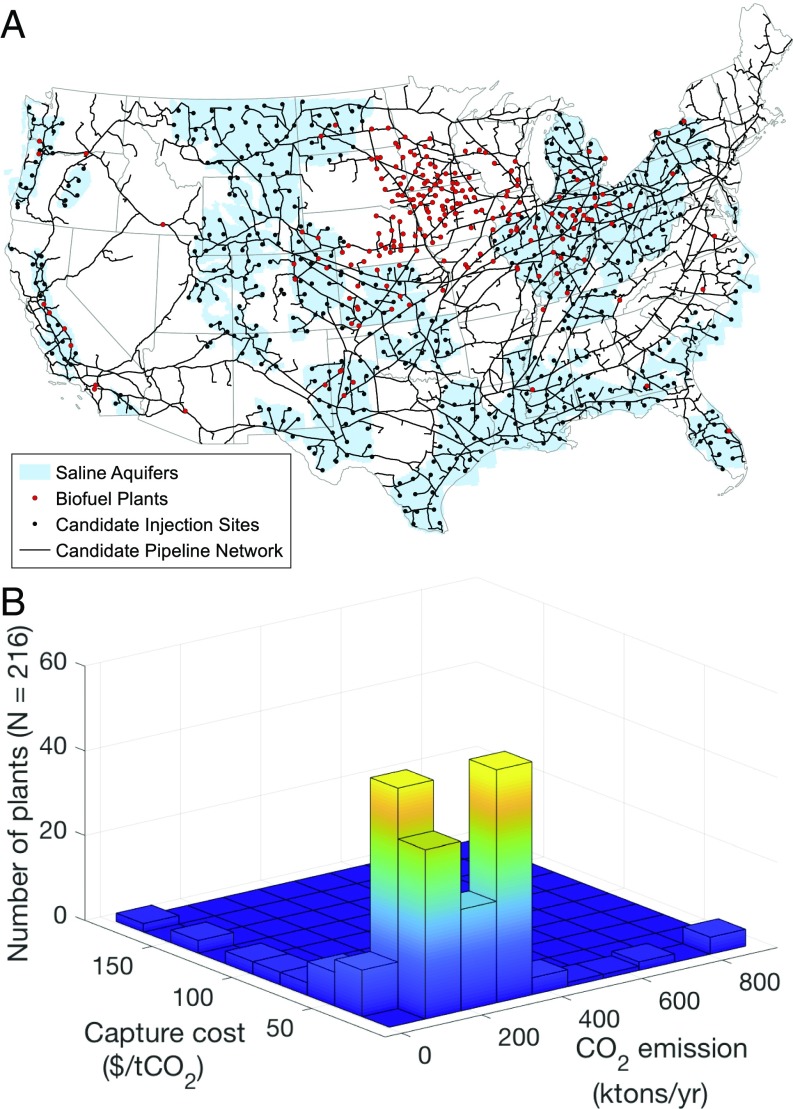Fig. 1.
(A) Existing and planned ethanol biorefineries, saline aquifers, candidate CO2 pipeline rights of way, and candidate injection sites in the United States. Lack of adequate sequestration capacity in proximity of existing biorefineries necessitates the construction of a CO2 transportation network to achieve high levels of abatement. (B) Contour plot of modeled abatement costs and scales for CO2 capture and compression for biorefineries (n = 216); 60% of fermentation CO2 emissions are available for pipeline transport for under $25/tCO2.

